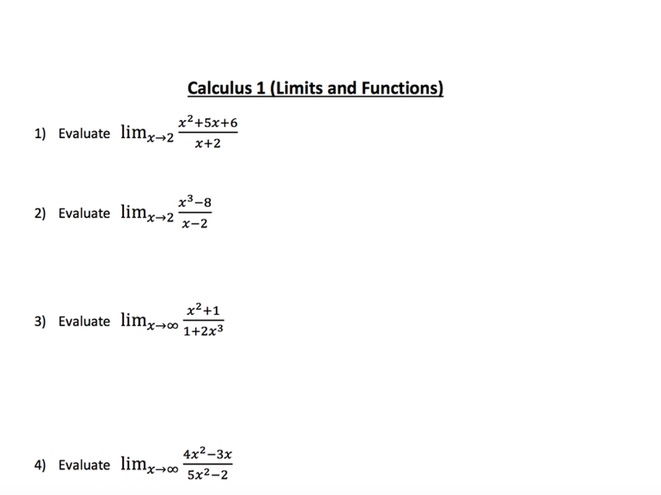


Interestingly, the limit does exist here: Solution: For problem a, note that the function is equal to the line x + 2, except that it is missing the point (1, 3). Practice Problem: Determine if the function is continuous at the given point. Note that a function is continuous on an open interval ( a, b) if it is continuous at all points in that interval. Look at the graph-note particularly that the x value is being approached from the right. For this function, you cannot directly apply the rules of limits and substitution. In this case, the function is a polynomial of degree 2. Here, substitution is possible without any problem. Alternatively, you can use the rules of limits and, where appropriate, simply substitute.Ī. One is to graph the function and look at the behavior of the function near the limiting x value (this is often helpful regardless of the approach you take). Solution: In each case, you can use a number of approaches. Practice Problem: Calculate the following limits. The mathematical proof for this fact is not overly complicated, but the result is fairly intuitive. Thus, when we are dealing with limits for polynomials, we can simply substitute the limiting value for x directly into the function. Solution: Recall that a polynomial p( x) has the following form, where the values c i (where i = 0, 1, 2, 3., n) are constants:Īs x approaches k, the polynomial (whatever its form) approaches p( k) because the domain of a polynomial is all real numbers.

Practice Problem: Describe in words why for polynomial p( x), the following is always true. These rules for limits enable us to break complicated expressions into simpler ones for the purposes of finding a limit. Below are the basic properties of limits for arbitrary functions f( x) and g( x) and arbitrary constant k. In these and other cases, it is often helpful to use rules that simplify calculations. Some limits may involve complicated expressions. Again in this case, the direction of approach doesn't matter. Here, as x gets arbitrarily large, so does ln x (i.e., the function has no real maximum value). Note that the limit is 0 regardless of the direction of approach.Ĭ. In this case, we can simply plug c into the function. The function approaches -∞, so the limit isī. For this limit, consider the value of ln x as x gets closer and closer to 0.


 0 kommentar(er)
0 kommentar(er)
